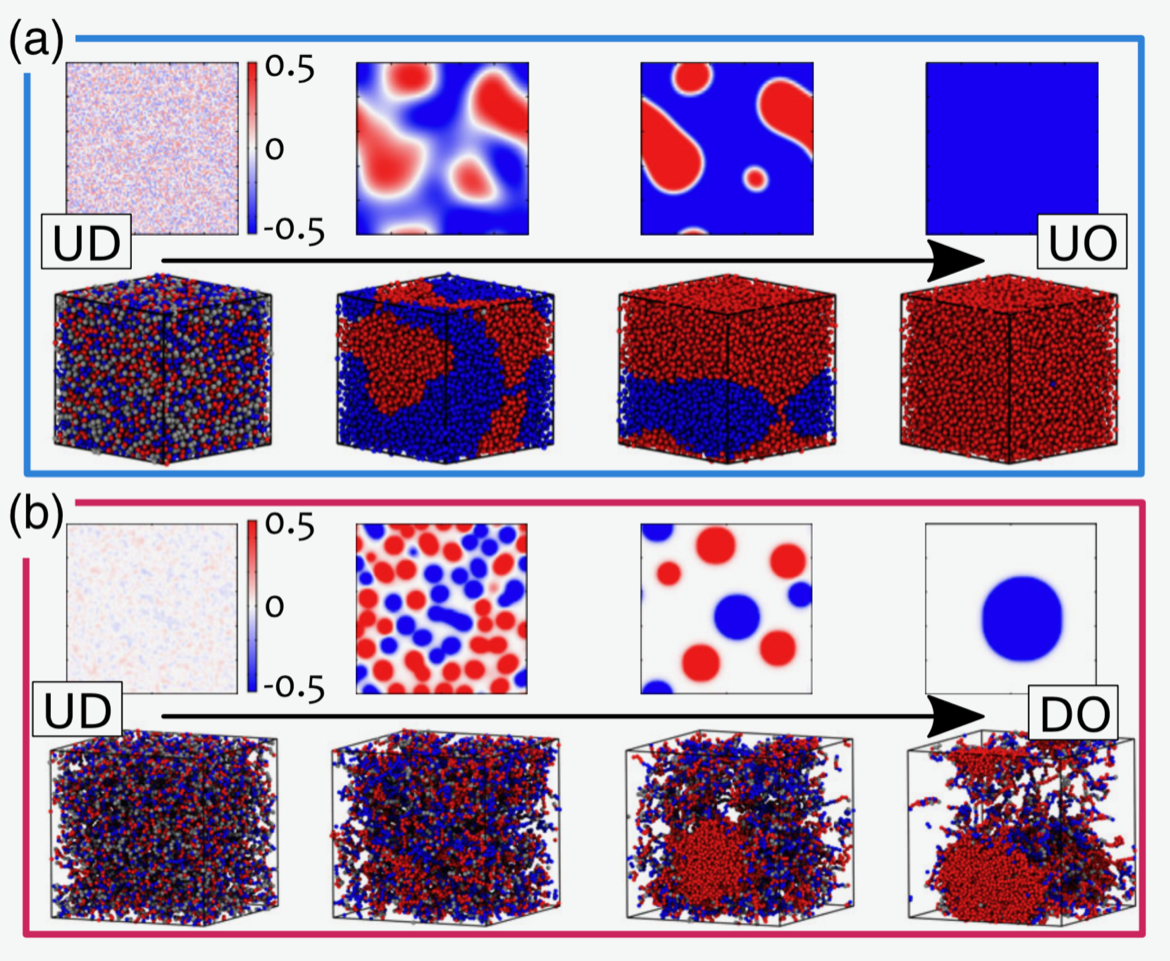Understanding the spatial organization of the genome in the cell nucleus is one of the current grand challenges in biophysics. Certain biochemical—or epigenetic—marks that are deposited along the genome are thought to play an important, yet poorly understood, role in determining genome organization and cell identity. The physical principles underlying the interplay between epigenetic dynamics and genome folding remain elusive. Here we propose and study a theory that assumes a coupling between epigenetic mark and genome densities, and which can be applied at the scale of the whole nucleus. We show that equilibrium models are not compatible with experiments and a qualitative agreement is recovered by accounting for nonequilibrium processes that can stabilize microphase separated epigenomic domains. We finally discuss the potential biophysical origin of these terms.
Download a copy of the manuscript (preprint version)

